Don't wanna be here? Send us removal request.
Text
Transform Your Kitchen with Ergonomics: Essential Layout and Design Tips
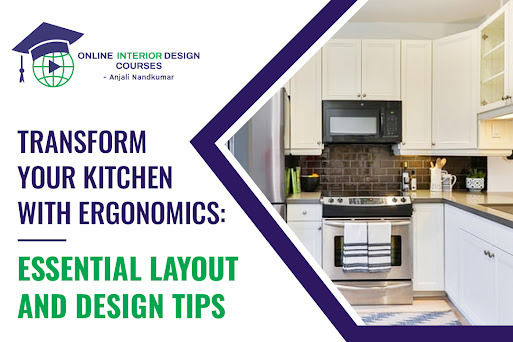
In our ongoing exploration of health and wellness through ergonomics, today we delve into the ergonomics of the kitchen, a vital aspect of home design. The previous discussions highlighted the dangers of neglecting ergonomic principles, maintaining proper posture while reading, writing, and watching, best practices to enhance work efficiency, and the ergonomics of pushing versus pulling loads. Now, we turn to the kitchen, the heart of the home, which serves as a cooking, storage, dining, and sometimes a family room. Despite its central role, many find themselves exhausted after working in the kitchen, often due to unnecessary movement or prolonged standing. This exhaustion can be mitigated by adhering to ergonomic guidelines designed to minimize stress and make cooking a more enjoyable activity.
The Ergonomic Kitchen: An Overview
An ergonomic kitchen is designed to optimize workflow and reduce physical strain by organizing the space according to the principles of the "kitchen work triangle." This triangle connects three critical areas: storage (refrigerator), washing (sink), and cooking (stove). Ideally, the countertop height should be tailored to the user's height, generally falling between 28 to 34 inches. This customization helps prevent strain on the back and shoulders during food preparation.
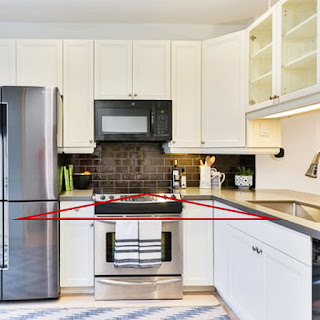
The kitchen work triangle aims to streamline movement by positioning these key areas within 4 to 9 feet of each other, with a total combined distance of 13 to 26 feet. This arrangement minimizes unnecessary steps and maximizes efficiency. Importantly, the path within this triangle should remain unobstructed to prevent accidents and reduce work fatigue, allowing for a more organized and cleaner kitchen environment.
Detailed Breakdown of the Kitchen Work Triangle
Storage Area:
The storage area primarily includes the refrigerator and cabinets used for storing food, cookware, and utensils. Efficient storage involves placing items close to where they will be used. For example, towels, dish soap, and sponges should be near the sink; oils, spices, pots, pans, and cooking utensils should be within reach of the stove; and knives, peelers, and cutting boards should be near the food preparation counter. This arrangement not only saves time but also reduces unnecessary movement and bending, which can lead to fatigue and potential injury.
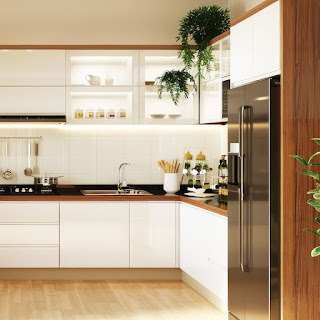
Preparation Area:
The preparation area encompasses the countertop space where chopping, kneading, and grinding occur. Keeping this area clutter-free is essential, as it requires ample space to facilitate efficient workflow. The positioning of frequently used items, such as knives and cutting boards, within easy reach minimizes repetitive strain and enhances productivity. Ensuring that preparation tools are readily accessible also contributes to a smoother and safer cooking process.

Cooking Area:
This area includes the stove, cooking range, microwave, and oven. To optimize the cooking area, frequently used cooking utensils and pots should be stored within easy reach. This setup allows the cook to operate without excessive stretching or bending, which can cause discomfort or injury over time. Proper placement of these items also contributes to a more organized kitchen, where tools and ingredients are easily accessible, thus enhancing the overall cooking experience.

Benefits of an Ergonomic Kitchen
Designing a kitchen with ergonomics in mind offers numerous benefits. Firstly, it significantly reduces work fatigue by minimizing unnecessary movements and streamlining the cooking process. This efficiency not only saves time but also conserves energy, making cooking less tiring. Secondly, an ergonomic kitchen helps prevent accidents by reducing clutter and ensuring that the workspace is logically organized. This safety aspect is particularly important in a space where sharp objects, hot surfaces, and slippery floors are common hazards. Thirdly, a well-organized kitchen allows the cook to maintain better control over the cooking process, leading to more efficient and enjoyable meal preparation. Lastly, keeping the kitchen clean becomes easier when everything has a designated place, reducing the time and effort needed for maintenance.

Reinforcement and Quiz
To reinforce the importance of an ergonomic kitchen layout, consider why there should be no obstacles along the work triangle. Obstacles disrupt the flow of movement, leading to increased physical strain and a higher likelihood of accidents. They can also create unnecessary detours, making the cooking process less efficient and more frustrating.
Enhancing Your Knowledge with Online Courses
For those interested in learning more about ergonomics and how to apply these principles in various contexts, enrolling in specialized online courses can be highly beneficial. Udemy offers a variety of courses, including "Ergonomics & Anthropometry Online Courses" and "Interior Design Course Online on Udemy." These courses provide in-depth knowledge on designing ergonomic spaces that cater to human needs, whether in the kitchen or other areas of the home.
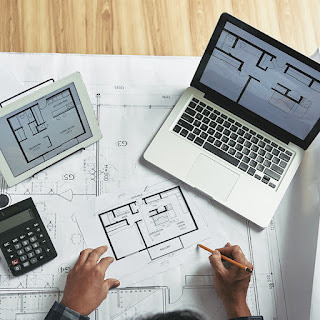
Expert Guidance from Anjali Nandkumar
Architect and interior designer Anjali Nandkumar offers expert guidance through her online courses, focusing on integrating ergonomics into interior design. Her courses cover critical aspects of ergonomics and anthropometry, tailored specifically for interior design applications. Whether you are a beginner or a seasoned professional, her insights can help you enhance your design skills and create more functional, comfortable spaces.

Guidelines for Joining Online Courses
When considering joining an online course, follow these guidelines to maximize your learning experience:
Define Your Objectives: Identify your learning goals and choose a course that aligns with your interests and needs.
Research the Instructor: Look into the instructor’s qualifications and experience. An expert like Anjali Nandkumar can provide valuable insights and practical knowledge.
Review Course Content: Ensure the course curriculum covers the topics you wish to learn and meets your expectations.
Check Reviews and Ratings: Read reviews and ratings from previous participants to gauge the quality and effectiveness of the course.
Assess Flexibility and Support: Consider the course's flexibility regarding schedule and the availability of support from the instructor or platform.
For more information on ergonomics, anthropometry, and interior design courses, and to learn from experts like Anjali Nandkumar, visit Interior Courses. This site offers a comprehensive range of resources and updates on the latest courses, helping you stay informed and enhance your expertise in the field.
Ref. https://interiorcourses.in/blog/all-you-need-to-know-about-an-ergonomic-kitchen
#architect and interior designer anjali nandkumar#interior decoration course online#artists on tumblr#online interior decoration course#online interior decoration course on udemy
0 notes
Text
Ergonomics and Anthropometry: Essential Insights for Everyday Health

In our continuing series on health and wellness, we focus on ergonomics, a vital component of maintaining good health through proper posture and movement. This series previously discussed the foundational importance of ergonomics for overall health and provided insights into maintaining good posture while reading, writing, and watching. Ergonomics extends beyond the confines of a study table or chair; it should be integrated into every aspect of daily life. Success in daily activities hinges on how we sit, stand, walk, lift, or pull objects, and these actions are crucial for maintaining good health.
Understanding Ergonomics: Pushing vs. Pulling
When it comes to carrying loads, the choice between pushing and pulling can significantly impact your body. Pushing a load is generally less stressful on the body because it utilizes your body weight and allows you to maintain a more neutral posture. This method also provides better visibility of the load, helping you avoid potential obstacles. In contrast, pulling often twists the body and typically involves the use of only one hand, which can slow down the process due to the lack of visibility and control over the load.

However, there are scenarios where pulling might be more practical, such as when handling a luggage bag. The decision to push or pull depends on factors like the surface angle, coefficient of friction, the nature of the load, the type of equipment, and any obstacles present. A balanced approach might involve starting with pushing and then alternating between pushing and pulling, or vice versa, depending on the situation.

Proper Use of Backpacks
Backpacks are ubiquitous, used by individuals of all ages for carrying various items, from school books to travel essentials. Yet, many people do not wear their backpacks correctly, often opting to use only one strap, which can lead to significant back injuries over time.


To ensure proper use of backpacks and to minimize strain on the back, consider the following guidelines:
Use Both Straps: Always wear both shoulder straps to distribute the weight evenly across both shoulders, rather than just one.
Tighten the Lower Belt: Secure the lower belt of the backpack just above the hip bone. This positioning allows approximately 50% of the backpack's weight to rest on the hips rather than the back.
Adjust the Shoulder Straps: Tighten the shoulder straps at the chest level to ensure a snug fit, but be careful not to over-tighten; there should be enough space to fit two fingers between the chest and the strap.
Utilize Load Lifters: If your backpack has load lifters near the top, pull and adjust them to help manage the load effectively.
These adjustments may seem minor but are crucial for maintaining long-term health and preventing injuries. Paying attention to these details can significantly improve your overall health and comfort.
To deepen your understanding of ergonomics and anthropometry, consider enrolling in online courses that cover these essential topics. Platforms like Udemy offer a range of courses tailored to interior design and ergonomics. Notable courses include Ergonomics & Anthropometry Online and "Interior Design Course Online on Udemy." These courses are designed to provide comprehensive knowledge on how to design spaces and products that fit the human body's needs, ensuring both comfort and efficiency.
For those interested in a more specialized approach, architect and interior designer Anjali Nandkumar offers expert guidance through her online courses. Her courses cover crucial aspects of ergonomics and anthropometry within the realm of interior design. Whether you are an aspiring interior designer or an established professional, these courses offer valuable insights and practical knowledge to enhance your skills.
Guidelines for Joining Online Courses
When considering joining an online course, it’s essential to follow some guidelines to ensure you get the most out of your learning experience:
Identify Your Learning Goals: Clearly define what you hope to achieve by taking the course. This will help you select the most relevant course that aligns with your objectives.
Research the Instructor: Look into the qualifications and background of the course instructor. An experienced and knowledgeable instructor, such as Anjali Nandkumar, can significantly enhance your learning experience.
Check Reviews and Ratings: Before enrolling, read reviews and check the ratings of the course. This will provide insights into the course���s quality and what previous learners have experienced.
Evaluate Course Content: Review the course curriculum to ensure it covers the topics you are interested in and meets your learning needs.
Assess Flexibility and Support: Consider the flexibility of the course schedule and the availability of support from the instructor or the course platform.
For more updates on courses related to ergonomics, anthropometry, and interior design, and to learn from experts like Anjali Nandkumar, This website provides a range of resources and information on available courses, helping you stay informed about the latest educational opportunities in the field of interior design and ergonomics.
Ref. - https://interiorcourses.in/blog/you-need-to-know-how-to-carry-load-without-load
#architect and interior designer anjali nandkumar#beginner interior design courses#online interior decoration course#artists on tumblr#welcome home#interior decoration course online
0 notes
Text
Enhancing Study and Work Efficiency: Ergonomic Solutions for Home and Office

Continuing with our series on health and wellness, we focus on ergonomics—a key pillar of good health. Previously, we covered the importance of ergonomics in daily activities such as reading, writing, and watching. Today, we delve into optimizing your working table design to boost efficiency and comfort, especially in the context of work-from-home (WFH) and online classes that have become commonplace post-pandemic.
Is Your Home Setup Ready for WFH?
With many of us working and studying from home, it's crucial to have the right accessories to support this new lifestyle. Consider the questions:
Is your home equipped with necessary WFH accessories?
How do you conduct meetings or your kids attend classes?
You may have heard phrases like "sitting is a silent killer" or "sitting is the new smoking." While these statements are alarming, they highlight the importance of a thoughtful approach to our home office setups. Here, we explore options to mitigate these issues.
The Dual-Mode (Sit-Stand) Desk: A Personal Experience

Recently, I visited my brother’s house, where he proudly demonstrated his dual-mode sit-stand desk. This innovative desk allows users to easily switch between sitting and standing positions, offering numerous benefits:
Convenience: Easily adjustable height to suit different needs.
Increased Energy: Standing can make you feel more energetic.
Enhanced Focus: Greater alertness and focus while working.
Flexibility: Ability to stretch and move freely.
Reduced Back Pain: Less strain on the back.
Postural Variety: Avoids the discomfort of prolonged sitting.
Impressed by these benefits, I felt compelled to share this information.
Complementing the Ergonomic Table: Essential Accessories
An ergonomic table is just the beginning. To create an optimal workspace, consider the following:
Ergonomic Chair

A good ergonomic chair is essential. It should offer:
Adjustable Height: Easy to raise and lower.
Lumbar Support: Reclined backrest for better back support.
Mobility: Castors for easy movement around your workspace.
Proper Lighting
Proper lighting is crucial to prevent eye strain and headaches. Here are some tips:
Natural Light: Utilize natural light as much as possible.
Artificial Light: Use when natural light is insufficient.
Avoid Darkness: Ensure your workspace is well-lit to avoid eye strain.
Dampers for Comfort
Standing for long periods on hard surfaces can cause leg pain. Solutions include:
Rubber Mats: Offer cushioning and act as dampers for your feet.

Rubber Slippers: Provide comfort for your legs.

Screen Brightness

Screen brightness is another often-overlooked factor. Incorrect brightness can harm your eyes. Tips include:
Auto Mode: Use auto-brightness settings if available, which adjust according to ambient light.
Manual Adjustment: Ensure the screen is not too bright or dim.
Balancing Work and Movement
Standing desks do not replace the need for exercise. Frequent breaks are essential. Here are some recommendations:
Stay Hydrated: Move away from the desk to drink water, which also encourages more movement.
Stretch or Walk: Take a five-minute break every 30 minutes.
Mobile Calls: Whenever possible, take calls while walking.
The key is to balance sitting, standing, and moving around.
Ideal Work Pattern

To illustrate an ideal work pattern, refer to the pie chart below (hypothetical here), which shows the recommended distribution of sitting, standing, and moving during your workday.
By following these ergonomic guidelines, you can enhance your efficiency, focus, and overall well-being while working or studying from home.
Key Concepts to Understand
For students study related fields, it's crucial to grasp the following:
Ergonomics & Anthropometry: Understanding human measurements and designing for comfort.
Principles and Elements of Interior Design: Applying design principles to create functional and aesthetically pleasing workspaces.
Essentials of Lighting: Ensuring adequate lighting to reduce strain and increase productivity.
Paint and Varnish: Choosing the right materials to create a conducive working environment.
Stay tuned for our next topic in this series, where we continue to explore vital aspects of creating a healthy and efficient workspace.
Ref. https://interiorcourses.in/blog/know-how-to-increase-efficiency-in-study-wfh
0 notes
Text
Achieving Comfort: Practical Tips for Maintaining Good Posture While Reading, Writing, and Watching
In the realm of health and wellness, ergonomics plays a crucial role in ensuring our daily activities are performed with minimal strain on our bodies. In this installment, we'll delve into the significance of maintaining proper posture while engaging in activities like reading, writing, and watching, shedding light on practical tips to alleviate discomfort and enhance productivity.
Reading is a fundamental activity that we engage in daily, yet it often leads to discomfort if not done with proper posture and ergonomics in mind. Whether you're flipping through a physical book or scrolling on a digital device, your posture matters greatly. Sit on a chair with your back pressed against the backrest, ensuring it's parallel to the chair's back. Maintain an upright position with your knees bent at a 90-degree angle, using a footrest if necessary. Align your neck, shoulders, and hips in a straight line and position the reading material at eye level to prevent strain. If using a laptop or tablet, elevate it to eye level using a laptop table or makeshift stand to avoid neck strain.

Writing or typing is another activity that demands attention to ergonomics to prevent discomfort and potential long-term health issues. Avoid hunching over while writing or typing, as this can strain your neck and back muscles. Opt for a study or office table of appropriate height, ideally between 26 to 30 inches, to maintain a comfortable posture. For children, consider using height-adjustable ergonomic chairs to support proper posture as they grow. Sit squarely at the table with both feet planted firmly on the ground or a footrest, keeping your spine erect and shoulders relaxed. Place your non-writing hand on the table to provide additional support and stability.

When it comes to Watching television, laptops, or mobile devices, ensuring proper posture is essential to minimize strain on your neck, shoulders, and back. Maintain the same ergonomic principles discussed earlier, such as sitting upright with your back supported and aligning your neck and shoulders. For mobile usage, raise your device to eye level rather than bending your neck downward. Initially, these adjustments may feel unfamiliar, but with practice, they can become second nature, promoting a healthier lifestyle and reducing discomfort.

Incorporating regular breaks into your routine is vital for preventing prolonged periods of sitting, which can lead to stiffness and discomfort. Aim to take breaks every 30 minutes to stretch, walk around, hydrate, and give your eyes a rest. These brief interludes not only alleviate physical strain but also rejuvenate your mind, enhancing focus and productivity.

Prioritizing ergonomics in everyday activities like reading, writing, and watching is key to maintaining comfort and preserving long-term health. By implementing simple yet effective ergonomic adjustments, you can minimize discomfort, enhance productivity, and promote overall well-being. Stay tuned for our next installment, where we'll explore another crucial aspect of ergonomics. Until then, remember to prioritize your health and well-being in all your endeavors.
Integrating Ergonomics with Interior Design and Decoration
Start your design journey with our Interior Design and Decoration Course , perfect for beginners and those seeking to enhance their skills. This immersive online course combines theoretical knowledge with practical insights, enriched with visuals and two practice tests, allowing you to improve aesthetics and make informed design decisions across various spaces. Ideal for aspiring designers, home decor enthusiasts, and professionals looking to refresh their knowledge, the course covers essential topics such as space planning, principles and elements of design, ergonomics, building materials, furniture, lighting, and more. Filled with engaging visuals and illustrations, the course ensures a thorough understanding of interior design. Prioritize health and well-being in all your endeavors, and stay tuned for the next installment on ergonomics.
Referral Links
#architect and interior designer anjali nandkumar#interior decoration course online#online interior decoration course on udemy#online interior decoration course#welcome home#artists on tumblr
0 notes
Text
Healthy Living The Importance of Ergonomics

You're probably familiar with the four pillars of good health: proper diet, exercise, rest, and a positive attitude.
In today's modern lifestyle, another crucial pillar has emerged: maintaining proper posture.
Men, women, and children alike are experiencing significant health issues due to poor posture.
Posture isn't just important while studying or using a laptop; it should be considered in all daily activities.
To address this, I'm launching a new series called Ergonomics.
Ergonomics focuses on studying furniture and equipment to enable more efficient and comfortable work.
In this blog, I'll start with the basics that everyone uses.
Bed
We spend approximately one-third of our life sleeping, so it's essential to have the right bed setup.
The bed should be between 16-25 inches high (top of mattress) from the ground, depending on the user's height.

When sitting, the legs should firmly touch the ground.
Side tables should ideally be the same height or lower than the bed, making it easier to access items.
Opt for a mattress that isn't too soft.
Ensure the headboard is curved to provide proper back support, as depicted in the picture.
Side note: It's recommended to avoid a TV in the bedroom.
Sofa
The sofa is a favourite spot for many during holidays. But do you pay attention to your posture while sitting on it?
Maintain a 90-degree angle between your thighs and legs.

The sofa back should be slightly inclined backward.
Ensure your hips touch the sofa backrest. If not, use cushions for padding, as shown in the picture.
If sitting for extended periods, consider using a foot platform, table, or pouffe to elevate your legs.
TV
If you have a TV in the living room, ensure you follow proper posture guidelines similar to those for the sofa.
Next question: where should the TV be placed?

It should be at eye level to keep your neck straight.
The height should be between 45" to 50" from the floor.
Choose a TV size appropriate for the room dimensions.
Consider the overall scale and proportion when selecting furniture.
These are just some basic guidelines to get started and should be adhered to.
In future blogs, I'll delve into increasing efficiency while working from home or studying, along with more ergonomic tips.
I'll also include dos and don'ts to maintain good posture.
I assure you this series will be exciting, so stay tuned for more updates.
Enroll now and embark on a journey to master the principles of aesthetic harmony and spatial transformation with our Interior Design and Decoration course.
Referral links
#architect and interior designer anjali nandkumar#interior decoration course online#online interior decoration course on udemy#succession#welcome home#artists on tumblr
0 notes
Text
Transform Your Room with a Single Focus

Continuing our exploration of "Principles and Elements of Designing," let's delve into the fourth principle: emphasis. We'll examine how it distinguishes itself from balance, rhythm, and harmony.
In emphasis, the primary aim is to direct the viewer's attention towards a specific element. This could be a word, a sentence, an image, a link, a button, or, in the realm of interior design, a particular feature.
An element that captures attention and stands out from the rest of the design is referred to as emphasis or a focal point.
Why is emphasis significant?
Failing to seize the viewer's attention at first glance can make it challenging to do so later on.
Emphasis is what initially captures attention, guiding the eye gradually through the rest of the design.
How can you establish a focal point in a room? Let's explore.
There are two primary methods:
Structural elements: Occasionally, architectural or structural components can be utilised to establish a focal point. For instance, a structural column situated in the middle of a room may initially appear as an obstruction, but it can be repurposed into a point of interest. Other structural elements such as windows, doors, balconies, fireplaces, or staircases (in standalone houses) could also serve as focal points. Achieving this leads to a well-designed space.
Consider this example:

In the above image, the window serves as a focal point. They capture our attention initially, and then our gaze gradually moves to other objects in the room. This is achieved by adhering to the principles of rhythm and harmony, fostering a seamless flow among all design elements.
Non-structural elements: In cases where existing elements do not lend themselves to serve as focal points, you can create one or even two. However, it's essential not to emphasise more than two elements, as it can result in visual clutter. The number of focal points a room should have also depends on its size. A focal point could be a wall, a painting, a plant, a lamp, a bed, curtains, a chair, or a table. Even a cluster of paintings, accessories, or plants can serve as a focal point. In summary, nearly any object can be transformed into a focal point with the strategic use of light, color, form, or texture.

In the depicted image, the cushions serve as a focal point, but gradually, the plant captures our attention. Subsequently, our eyes wander to other elements in the room. Notice the shapes of the objects; they predominantly feature curves, including the centre table. This fosters a fluid flow in the design.
Creating a focal point in your room can elevate its visual appeal and captivate attention. Whether through structural or non-structural elements, emphasis plays a pivotal role in interior design, guiding the viewer's gaze and cultivating a cohesive and harmonious space.
Ref. https://interiorcourses.in/blog/just-1-thing-to-make-your-room-look-interesting
#architect and interior designer anjali nandkumar#interior decoration course online#artists on tumblr#welcome home#online interior decoration course on udemy#the owl house
0 notes
Text
Part 2-The Proportion Puzzle: Cracking the Code for Stunning Interiors

In this follow-up installment of our series on "Principles and Elements of Designing," we delve into the crucial aspects of proportion and scale, shedding light on their significance in creating harmonious living and working spaces. As we've previously discussed the principles of balance, rhythm, harmony, and emphasis, let's now explore how proportion and scale play pivotal roles in achieving a well-designed interior.
Proportion refers to the relationship between various objects within a space and their surroundings. It's about ensuring that each element not only complements one another but also fits cohesively into the overall composition.

For instance, when selecting a coffee table for a sofa, it's advisable to choose one that is approximately two-thirds the length of the sofa itself. This ensures that the proportions remain balanced and visually appealing. Similarly, artwork hung behind the sofa should ideally occupy two-thirds of its width, whether as a single piece or in a carefully curated arrangement of smaller artworks.
Another essential element to consider is scale, particularly when it comes to items like rugs or carpets. When placing a rug in a living room, it should be large enough to accommodate the sofa's front legs and the coffee table entirely. This creates a sense of cohesion and unity within the space, ensuring that every component feels interconnected and proportionate to one another.
Take, for example, the image provided below, where the placement of furniture and accessories demonstrates a keen understanding of proportion and scale. Notice how the front legs of the sofa and side chairs rest comfortably on the rug, while the size of the coffee table complements the sofa's dimensions, maintaining a visually pleasing balance throughout the room.

While adhering to these general guidelines can yield cohesive and aesthetically pleasing interiors, it is essential to recognize that rules can be broken creatively. When implemented with care, discrepancies in proportion and scale can introduce a compelling sense of drama and intrigue to a design scheme.
Whether through bold lines, unconventional forms, or striking color contrasts, architect and interior designer Anjali Nandkumar embraces the opportunity to push boundaries and challenge conventional norms.
In the image provided below, for instance, the oversized floor lamp serves as a striking focal point, disrupting traditional notions of scale and proportion. By deviating from the norm, it adds personality and character to the space, sparking conversation and visual interest.

Mastering proportion and scale is key to achieving harmonious and visually appealing interiors. Whether through adherence to traditional guidelines or innovative experimentation, architects and interior designers continue to explore new avenues for creative expression. For those seeking to deepen their understanding of interior design principles, online courses such as those offered by Anjali Nandkumar on Udemy, provide valuable insights and practical skills to elevate your design practice.

#architect and interior designer anjali nandkumar#interior decoration course online#artists on tumblr#online interior decoration course#beginner interior design courses
0 notes
Text
Part 1-Interior Design Fixes Addressing Common Home and Office Issues

Welcome back to our series focusing on the Principles and Elements of Designing. In this instalment, we delve into the crucial aspects of "Proportion and Scale" in interior design – a fundamental principle that can make or break the aesthetics of your space.
After exploring principles like balance, rhythm, harmony, and emphasis, we now turn our attention to the often overlooked but equally important principle of Proportion and Scale.
When you step into a room, do you sense that something is amiss? That feeling might be attributed to the subtleties of proportion and scale in the design.

In interior design, proportion and scale refer to the relationships between objects or between objects and the user. Understanding this relationship is pivotal for creating harmonious and visually pleasing spaces.
Scale: Balancing Objects and Spaces Scale, in design, generally denotes the relationship between two objects. This is particularly crucial when the size of one object is known with certainty. In architecture and interior design, everything is planned in comparison to the size of the human body.

For instance, door width and height adhere to standardized dimensions that suit the average human size. Furniture, such as tables and chairs, is designed with specific heights to ensure comfort and functionality. Television placement is also considered in relation to eye level when seated.
Scale is a paramount factor when selecting furniture. It's not just about aesthetics; it's about choosing pieces that align with the users' height and other requirements. Take, for example, a study table in a child's room – the table and chair should be proportionate to the child's height, promoting proper posture and aligning with ergonomic principles.
Space & Scale: Making Furniture Fit Scale also extends to the size of objects concerning the available space. Depending on whether the room is spacious or compact, one must decide on the appropriate size of furniture. In larger rooms, substantial furniture pieces can enhance the aesthetics, while in smaller spaces, simpler and sleeker designs are preferable.
For instance, a sleek dining table and chairs can create an illusion of openness in smaller rooms.

Teaser: In the images above, there might be room for minor improvements. Can you spot them? Feel free to provide feedback and suggestions.
This discussion doesn't conclude here; join us again in Part 2, where we'll unravel the nuances of "Proportion" and explore how it differs from "Scale." Stay tuned for more insights into the art of interior design.

#architect and interior designer anjali nandkumar#beginner interior design courses#artists on tumblr#online interior decoration course on udemy#welcome home
0 notes
Text
Harmonizing Spaces Elevate Your Home/Office with the Rhythms of Design

Continuing our journey through the Principles and Elements of Designing, we transition from the concept of balance to the captivating principle of rhythm. Much like its musical counterpart, rhythm in design possesses a profound essence, bringing life and vibrancy to spaces.
In the context of design, rhythm unfolds through the repetition of elements, forming a visual cadence that reverberates throughout a room. The intervals between these recurring elements contribute to an overall sense of rhythm, guiding the viewer's gaze effortlessly from one object to the next
Rhythm can be classified into three types as follows,
1. Regular Rhythm or Repetition
True to its name, regular rhythm takes shape through consistent repetition of elements such as light, color, pattern, texture, form, proportion, and scale. In the showcased kitchen setting, pendant lights and stools exhibit a perfect illustration of regular rhythm. Positioned at regular intervals, these elements create a visually pleasing and cohesive rhythmic pattern.

2. Flowing Rhythm or Alternation
Flowing rhythm unfolds when alternating elements contribute to the overall design, whether in color and form, texture and form, or color and shape. The living room pictured below exemplifies flowing rhythm through the repetition of the square shape. Nearly all objects featuring this square shape, combined with a consistent wooden texture, establish a harmonious and flowing rhythm that ties the room together.

3. Progressive Rhythm
Progressive rhythm emerges through the gradual progression of one or more elements, achieved through color gradation or a sequence of objects evolving from small to large. In the provided image, color and form collaborate to establish a progressive rhythm, with a gradual change in form, starting small and evolving into larger elements. The circular design around the mirror and the progression in the size of kettles below it exemplify the concept of progressive rhythm.

The practical application of these principles strengthens the learning process. Now, let's engage in a participatory exercise.

Feel free to share your answer in the comment box below, along with any suggestions or recommendations.
As we unveil the secrets of design, the rhythmic elements within your space can transform it into a visual symphony. Adding new music to your home or office involves understanding and applying the principles of rhythm, creating an environment resonating with harmony and aesthetic appeal.
Discover the transformative power of design with architect and interior designer Anjali Nandkumar. Explore online interior design courses on Udemy and enhance your skills in residential interior design. Elevate your understanding and application of design principles today.
#architect and interior designer anjali nandkumar#interior decoration course online#artists on tumblr#online interior decoration course on udemy#the owl house
0 notes
Text
A Deep Dive into the Essence of Design – Unveiling the Core Tenet of Balance

Upon entering a room, some spaces immediately draw you in with their charm, while others seem haphazardly arranged. Ever wondered about the root cause of this discrepancy? The key lies in achieving a delicate equilibrium in design.
In the realm of interior design, attaining visual harmony takes precedence. This inaugural blog in our series, "Foundations of Design: Principles and Elements," embarks on an exploration of the fundamental aspects that contribute to the creation of well-balanced and aesthetically pleasing spaces.
The primary focus of our scrutiny is the concept of 'Balance.
BALANCE
Balance is the linchpin of success in various aspects of life, whether it's work, personal relationships, or the visual appeal of your living space.
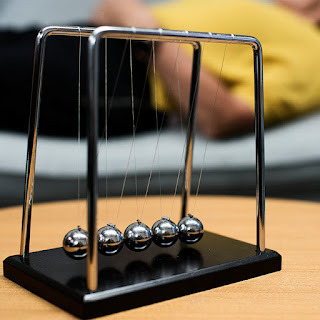
In the context of interior design, we delve into the idea of visual balance, where objects within a space coexist harmoniously, each carrying equal weight and significance. Neglecting this balance can result in the viewer's attention being fixated on one focal point, causing the rest of the space to be overlooked.
To address this, mastering the art of balance becomes imperative, and there are three fundamental types:
Symmetrical Balance or Formal Harmony
Symmetry, as the name suggests, revolves around an imaginary central line dividing objects. What lies on one side mirrors the other, creating a formal and predictable aesthetic. Symmetrical balance finds its place in modern bedrooms and living rooms, offering a clean and soothing ambiance.

Asymmetrical Balance or Informal Harmony
Asymmetry introduces an element of unpredictability, deviating from the mirrored precision of symmetrical balance. While objects on one side differ from the other, there exists synchronization and visual balance along the imaginary central line. This approach injects vitality into spaces, steering clear of monotony.
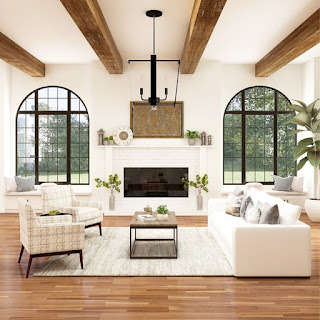
Radial Harmony
Tailored for circular objects, radial balance emanates from a central point, resembling the spokes of a wheel or the sun's rays. Circular tables surrounded by chairs or concentric circles on the ceiling exemplify this balance, creating a comfortable design for group settings.
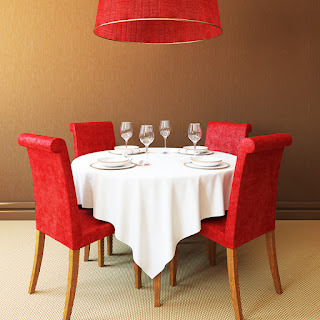
As we conclude this exploration of balance, stay tuned for the next chapter, where we unravel the captivating world of 'Rhythm' in our ongoing series. Acquire the skills, grasp the principles, and transform your living spaces into harmonious sanctuaries.
Ref. blog- https://interiorcourses.in/blog/know-how-to-restore-balance-in-your-home-office
#architect and interior designer anjali nandkumar#beginner interior design courses#interior decoration course online#online interior decoration course#online interior decoration course on udemy
0 notes
Text
Achieving Harmonious Spaces Unveiling the Secrets of Interior Design Balance
Upon entering a room, some spaces emanate warmth and harmony, while others appear cluttered and chaotic. Have you ever pondered why? The answer lies in the delicate balance of design. In this article, we delve into the principles and elements of interior design, focusing on achieving visual balance to restore harmony in your home or office.

The Importance of Balance
Balance is a fundamental aspect not only in work, personal life, and relationships but also in interior design. In the realm of design, we underscore visual balance, ensuring that every object contributes equally to the overall aesthetic. Failure to achieve balance may lead the viewer's attention to fixate on one element, neglecting the rest of the space.
Principle of Balance in Interior Design
In the vast landscape of interior design, balance takes shape in three distinct forms:
Symmetrical Balance or Formal Balance
Symmetry, marked by an imaginary central line dividing objects, imparts a formal and predictable appeal. Ideal for modern bedrooms or living rooms, symmetrical balance offers clean and calming aesthetics. Let's explore a practical example:
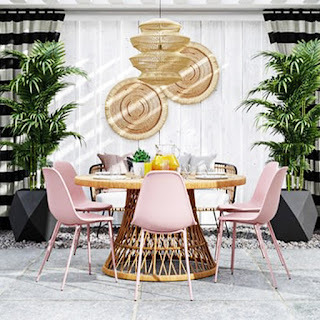
In the above image, observe the chairs on either side of the table, also see the shape, size, colour, height of planters, plants & curtains behind. Note the symmetry.
Asymmetrical Balance or Informal Balance
Departing from predictability, asymmetrical balance introduces variety without mirroring objects on either side of the central line. This approach achieves synchronization and visual balance through differences in size, shape, and color. Observe the example:

In the provided image, notice the asymmetry in furniture arrangement and accessories. Differing in size and shape, yet harmonized throughout the space.
Radial Balance
Tailored for circular objects, radial balance radiates from a central point, resembling the spokes of a wheel or rays of the sun. This technique proves especially effective for designing spaces with circular elements:

Consider the circular table surrounded by the seating arrangement at an equal distance from the centre. The concentric circles on the ceiling exemplify radial balance.
Interior Design Guru: Anjali Nandkumar

For deeper insights into the art of interior design, explore online courses like the Online Interior Decoration Course' on Udemy. Interior design enthusiasts can benefit from the expertise of renowned architect and interior designer, Anjali Nandkumar.
#architect and interior designer anjali nandkumar#interior decoration course online#artists on tumblr#online interior decoration course on udemy#beginner interior design courses#online interior decoration course
0 notes
Text
Discover the Art of Interior Design and Decoration online
Are you passionate about transforming spaces and creating visually stunning interiors? Interior Design and Decoration is not just about arranging furniture; it's an art that involves a careful blend of colours, lighting, and accessories to craft spaces that are both functional and aesthetically pleasing. Whether you're looking to spruce up your home or embark on a career in this creative field, understanding the fundamentals is essential. Dive into the world of Interior Design and Decoration to explore how you can breathe life into every room.

When it comes to interior spaces, the finishing touches make all the difference. Interior Decoration is the art of selecting the right fabrics, accessories, and decorative elements to elevate a space's overall aesthetics. It's about creating an atmosphere that mirrors the personality and style of its inhabitants. Discover the art of adding the perfect finishing touches to your interiors with the nuances of Interior Decoration.
Interested in delving deeper into the world of Interior Design? Various courses cater to different levels of expertise, offering a comprehensive understanding of the field. Whether you're keen on honing your skills in wood joinery and furniture or prefer the convenience of an online Interior Design course on Udemy, there's a learning path for everyone. Explore the multitude of courses available to unlock your potential in the diverse realm of Interior Design.

If you have a passion for craftsmanship and woodworking, specific Interior Design courses focus on the intricate details of wood joinery and furniture. These courses delve into the properties of different woods, joinery techniques, and the principles of furniture design. Shape your spaces with bespoke furniture and gain expertise in the art of wood joinery and furniture design.
In today's digital age, learning has become more accessible than ever. Platforms like Udemy offer online Interior Design courses, providing flexibility and convenience. These courses cover a spectrum of topics, from the fundamental principles of design to advanced techniques. Explore the convenience of learning at your own pace with an online Interior Design course on Udemy.

For inspiration and insights into the world of design, look no further than Anjali Nandkumar, a distinguished architect and interior designer. Her innovative approach and creative designs have earned acclaim in the industry. Exploring the works of professionals like Anjali Nandkumar can provide valuable perspectives for aspiring interior designers. Learn from the experiences of industry experts to enhance your understanding of Interior Design.
Ready to embark on a creative journey? Our tailor-made Interior Design courses are designed to unlock your creative potential. Whether you're a beginner or aiming to enhance your skills, our courses cover a spectrum of topics. From understanding basic design principles to mastering advanced techniques, we lay the foundation for a rewarding career or personal project. Enroll now to explore your creativity and initiate a journey of artistic transformation.
Enroll now and Initiate a Journey of Artistic Transformation: Commence on an interior design course is not merely an educational pursuit; it's a transformative journey. Enrolling in our courses offers you the opportunity to explore your creativity, refine your skills, and discover the nuances of creating captivating interiors. The decision to enrol is not just about gaining knowledge; it's about initiating a journey of artistic transformation that will shape your understanding of Interior Design.
Whether you aspire to be a professional interior designer or simply want to elevate your home décor, the knowledge gained from courses and insights of industry experts can guide you in the right direction.
#architect and interior designer anjali nandkumar#interior decoration course online#beginner interior design courses#online interior decoration course on udemy#online interior decoration course
0 notes
Text
Harmonizing Spaces Elevate Your Home/Office with the Rhythms of Design

Continuing our journey through the Principles and Elements of Designing, we transition from the concept of balance to the captivating principle of rhythm. Much like its musical counterpart, rhythm in design possesses a profound essence, bringing life and vibrancy to spaces.
In the context of design, rhythm unfolds through the repetition of elements, forming a visual cadence that reverberates throughout a room. The intervals between these recurring elements contribute to an overall sense of rhythm, guiding the viewer's gaze effortlessly from one object to the next
Rhythm can be classified into three types as follows,
1. Regular Rhythm or Repetition
True to its name, regular rhythm takes shape through consistent repetition of elements such as light, color, pattern, texture, form, proportion, and scale. In the showcased kitchen setting, pendant lights and stools exhibit a perfect illustration of regular rhythm. Positioned at regular intervals, these elements create a visually pleasing and cohesive rhythmic pattern.

2. Flowing Rhythm or Alternation
Flowing rhythm unfolds when alternating elements contribute to the overall design, whether in color and form, texture and form, or color and shape. The living room pictured below exemplifies flowing rhythm through the repetition of the square shape. Nearly all objects featuring this square shape, combined with a consistent wooden texture, establish a harmonious and flowing rhythm that ties the room together.

3. Progressive Rhythm
Progressive rhythm emerges through the gradual progression of one or more elements, achieved through color gradation or a sequence of objects evolving from small to large. In the provided image, color and form collaborate to establish a progressive rhythm, with a gradual change in form, starting small and evolving into larger elements. The circular design around the mirror and the progression in the size of kettles below it exemplify the concept of progressive rhythm.

The practical application of these principles strengthens the learning process. Now, let's engage in a participatory exercise.

Feel free to share your answer in the comment box below, along with any suggestions or recommendations.
As we unveil the secrets of design, the rhythmic elements within your space can transform it into a visual symphony. Adding new music to your home or office involves understanding and applying the principles of rhythm, creating an environment resonating with harmony and aesthetic appeal.
Discover the transformative power of design with architect and interior designer Anjali Nandkumar. Explore online interior design courses on Udemy and enhance your skills in residential interior design. Elevate your understanding and application of design principles today.
#architect and interior designer anjali nandkumar#online interior decoration course on udemy#Principle and elements of designing course
0 notes
Text
Lighting the Way: Navigating Artificial Light in Interiors - Part 2

Welcome back to our exploration of the fascinating world of online interior designing course in lighting!
In this blog, we'll shine a light on artificial illumination, a vital aspect of creating ambience and functionality in any space. So, let's dive into the realm of artificial light and discover how it transforms our surroundings.
Understanding Artificial Light:
Artificial light, in simple terms, is light created by humans. It encompasses various sources such as candlelight, firelight, gaslight, and, particularly in this discussion, electric light. Here, we'll focus on the magical world of electrical lighting and its transformative role in interior spaces.

Why Artificial Light Matters:
Artificial light steps in when natural light takes a bow. There are instances when we need more light than what the sun offers, or we aim to craft specific moods within a space. This is where artificial light becomes a design superhero.
Artificial light is a versatile tool for designers and decorators, offering the following advantages:
Ease of Effect:
It allows us to achieve desired effects easily and swiftly, adapting the atmosphere to our liking.
Adjustable Intensity:
The intensity of artificial light can be easily changed, directed, or focused, providing flexibility in creating different lighting scenarios.

Instant Ambiance Change:
Room colour can be transformed with a click, solely through the strategic use of artificial lights, without altering wall colours.
Creating Varied Effects:
Lighting can be manipulated to produce a range of effects, tailoring the ambiance to suit the specific requirements of a space.

Applications of Artificial Lighting:
When selecting artificial lighting, it's crucial to consider the function and purpose of the space. Let's break down the three main types of artificial lighting:
Ambient or General Lighting:
Also known as general lighting, ambient light provides overall illumination for a room.
It ensures comfortable movement from one point to another and is commonly used in all rooms, including relaxation spaces like spas or meditation rooms.

Fixtures such as wall-mounted lights, ceiling lights, or pendant lights, like chandeliers, serve as ideal choices for general lighting.
Task Lighting:
Task lighting comes into play when precision and efficiency are essential for specific activities.
Best suited for areas where ambient light alone is insufficient, such as reading areas, study tables, kitchen workstations, and office workstations.
Pendant lights, table lamps, floor lamps, track or recessed lights are examples that can be strategically placed to achieve the desired effect.

Accent Lighting:
Accent lights are employed to highlight specific features like sculptures, art pieces, paintings, or plants.
They add an extra layer of emphasis to unique designs on walls or ceilings.
Accent lighting, when combined with ambient light, creates a captivating interplay of light and shadow.
Scones, floodlights, recessed lights, and track lights can be used as effective accent lights.

Effect Lighting - Elevating the Drama:
Beyond the basics, accent lighting can be taken a step further with effect lighting. This type of lighting is employed to create dramatic effects, often embedded in architectural elements.

Effect lightingcreates dramatic effects by placing lights around structures.
Is often used indoors for crown moulding and outdoors for landscaping, pergolas, or facades.
Lighting Tips for a Well-Lit Space:
Whether you're designing an office, a restaurant, a bedroom, or a kitchen, the key is to strike a balance between ambient light, tasks light, and/or accent light. This creates a harmonious and aesthetically pleasing environment.

Illuminate your understanding and elevate your skills with our online interior design course on Udemy, guided by architect and interior designer Anjali Nandkumar. The course will empower you to create visually stunning and functionally harmonious interiors. Enroll now and brighten your design journey! For more information or to make an online enquiry for Interior Design courses, reach out to us.
Ref. https://onlineinteriorcourses.blogspot.com/2024/01/onlineinteriordesigningcourseinlighting.html
#architect and interior designer anjali nandkumar#interior decoration course online#online interior decoration course
0 notes
Text
Discover the Art of Interior Design and Decoration online

Are you passionate about transforming spaces and creating visually stunning interiors? Interior Design and Decoration is not just about arranging furniture; it's an art that involves a careful blend of colours, lighting, and accessories to craft spaces that are both functional and aesthetically pleasing. Whether you're looking to spruce up your home or embark on a career in this creative field, understanding the fundamentals is essential. Dive into the world of Interior Design and Decoration to explore how you can breathe life into every room.
When it comes to interior spaces, the finishing touches make all the difference. Interior Decoration is the art of selecting the right fabrics, accessories, and decorative elements to elevate a space's overall aesthetics. It's about creating an atmosphere that mirrors the personality and style of its inhabitants. Discover the art of adding the perfect finishing touches to your interiors with the nuances of Interior Decoration.
Interested in delving deeper into the world of Interior Design? Various courses cater to different levels of expertise, offering a comprehensive understanding of the field. Whether you're keen on honing your skills in wood joinery and furniture or prefer the convenience of an online Interior Design course on Udemy, there's a learning path for everyone. Explore the multitude of courses available to unlock your potential in the diverse realm of Interior Design.

If you have a passion for craftsmanship and woodworking, specific Interior Design courses focus on the intricate details of wood joinery and furniture. These courses delve into the properties of different woods, joinery techniques, and the principles of furniture design. Shape your spaces with bespoke furniture and gain expertise in the art of wood joinery and furniture design.
In today's digital age, learning has become more accessible than ever. Platforms like Udemy offer online Interior Design courses, providing flexibility and convenience. These courses cover a spectrum of topics, from the fundamental principles of design to advanced techniques. Explore the convenience of learning at your own pace with an online Interior Design course on Udemy.

For inspiration and insights into the world of design, look no further than Anjali Nandkumar, a distinguished architect and interior designer. Her innovative approach and creative designs have earned acclaim in the industry. Exploring the works of professionals like Anjali Nandkumar can provide valuable perspectives for aspiring interior designers. Learn from the experiences of industry experts to enhance your understanding of Interior Design.
Ready to embark on a creative journey? Our tailor-made Interior Design courses are designed to unlock your creative potential. Whether you're a beginner or aiming to enhance your skills, our courses cover a spectrum of topics. From understanding basic design principles to mastering advanced techniques, we lay the foundation for a rewarding career or personal project. Enroll now to explore your creativity and initiate a journey of artistic transformation.
Enroll now and Initiate a Journey of Artistic Transformation: Commence on an interior design course is not merely an educational pursuit; it's a transformative journey. Enrolling in our courses offers you the opportunity to explore your creativity, refine your skills, and discover the nuances of creating captivating interiors. The decision to enrol is not just about gaining knowledge; it's about initiating a journey of artistic transformation that will shape your understanding of Interior Design.
Whether you aspire to be a professional interior designer or simply want to elevate your home décor, the knowledge gained from courses and insights of industry experts can guide you in the right direction.
#wood joinery and furniture courses#online Interior decoration course#online interior design course on Udemy#online interior design courses
0 notes